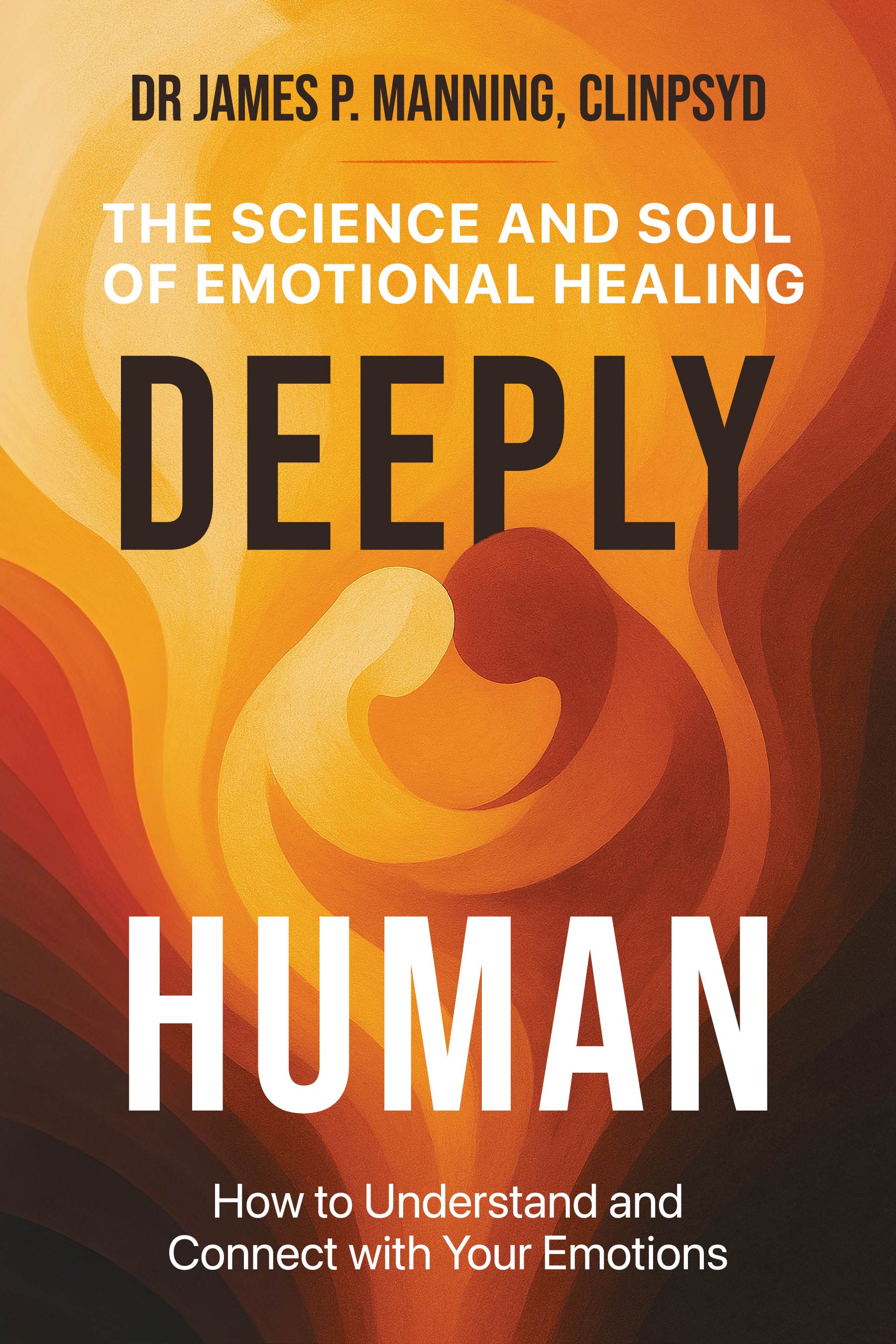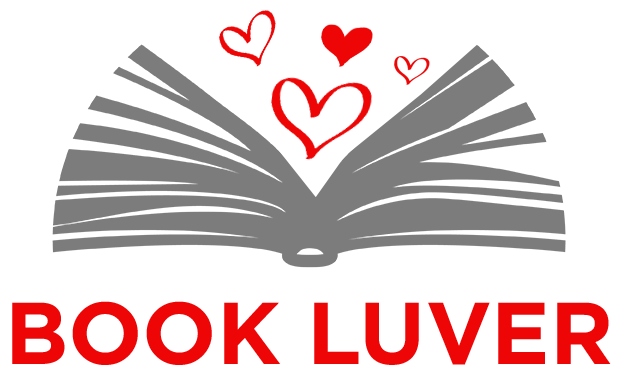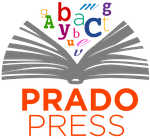
Is Deeply Human for You?
Deeply Human is designed for a select group. Please check if the following apply before purchasing this book for yourself or others.
Deeply Human readers:
Persevere through stress, silence, shame, and the pain of feeling misunderstood.
Listen more than they speak.
Do a lot to help others and ignore their own needs.
Often ask themselves: ‘Is this all there is?’
Coping styles of Deeply Human readers
People who will benefit from reading Deeply Human carry self-doubt. They put off telling others that something others said or did hurt them, even though the pain remains. They avoid asking for time out, fearing they’ll be perceived as not coping?
In tough times, they look for comfort in what’s familiar—sugar, chocolate, fast food, television, medication, alcohol—but afterward, the emptiness only deepens. Around others, they find themselves saying ‘yes’ to things they don’t really want to do. They may even feel guilty for simply wanting time alone. And when they do speak up, others might say they are too sensitive—or accuse them of being emotionally distant.
Does this sound like you? If it does, let’s see what Deeply Human can do to help.
What Deeply Human offers
If intense emotions or troubling experiences seem to emerge from nowhere, your relationship with emotions may be at the center of what’s happening. This often occurs for those grappling with trauma or deep emotional pain where the past continues to intrude on the present.
The emotional patterns you face will become more understandable once you recognize how emotions function in the mind and body. Deeply Human will help you understand these patterns and what lies underneath them. It will guide you through naming and expressing your needs without guilt.
How Deeply Human will help
Small moments of emotional connection can affect how your whole body reacts. Through this, you can begin to change how you relate to yourself.
If you have experienced emotional disconnection, or simply feel out of touch with your inner world, Deeply Human offers you the practical tools for personal healing.
Deeply Human will help you develop a compassionate, grounded relationship with your emotions—so you can live with greater authenticity, resilience, and connection. It invites you to engage with your most feared emotions so that you can finally make sense of them.
Imagine feeling a wave of tightness in your chest after an argument. Instead of pushing it away, you will learn to speak with that tightness. Deeply Human will show you what to say so that your emotions dissipate of their own volition. This will not occur as a result of rationalizing, avoidance, control, or even changing your behavior. It will come about through compassionate communication. This type of communication will take a while to learn (as you will already have noted, Deeply Human is not a short book), so there is a fair amount to cover.
What Deeply Human will and will not provide
Deeply Human will not provide quick fixes, offer detached theories, or suggest oversimplified answers to complex emotional struggles. It will not communicate with you in a robotic, formulaic way—because you are a living, breathing human being, and you deserve something real and meaningful.
What you will find in Deeply Human is a grounded, practical exploration of emotions through stories, reflections, and usable ideas.
You will explore how emotions manifest in the body, how experiences shape emotional habits, and how to reconnect with feelings that once flowed unrestrictedly through you as a child.
If you wonder, “Will this really work for me?”—this is understandable. Although everything shared in ‘Deeply Human’ has been tried and tested by the author over many decades, what works for many people does not apply to everyone. Your situation is unique to you. If you are unsure, read ‘Deeply Human’ with an open mind, consider what is offered, and make a decision one page at a time.
Please feel free to ask difficult questions before you read. As you explore Deeply Human, you may find the answers you seek.
How is Deeply Human structured?
In Chapter 1 you will learn how emotions function and interact with the mind. You will also learn specific ways to guide your mind toward new emotional solutions using strategies that are not common knowledge.
Starting in Chapter 2, you’ll meet three therapy clients—Mark, Patricia, and Lisa—and follow their journeys in therapy.
Along the way, you will receive practical solutions to develop emotional awareness, emotional regulation, and insight.
You will learn practices such as emotional syncing, grounding techniques to stabilize your feelings, and tracking emotional changes to understand transformations in your emotional state.
From Chapter 10, you will discover strategies for communicating with emotions to reduce their intensity, including techniques to assist in recovery from trauma.
By the end of this book, you will have a thorough introduction to the language of emotions—and greater confidence in navigating your feelings, your body, and your life.
You will see emotions, not as problems to solve, but as integral experiences essential to being human.
If you have never examined your emotional life before, Deeply Human may appear strange and, at times, offer the unexpected. Deeply Human will show you that emotions are not flaws or signs of weakness but are instead natural, meaningful responses.
Before we proceed, let us review our travel plan so we can see what our voyage might look like.
Ground rules for your journey
We'll start with a basic premise which is: be honest with your emotions—it is pointless lying to them. They know what you want, what you do not want, even if you have blocked or ignored them. They have been with you through every step of your life; there is no experience they were not part of.
Working with emotions will be a gradual process of building trust that offers access to deep experiential knowledge and understanding. As you meet your emotions with sincerity, you will notice that emotional intuition will guide you in ways you do not expect. Knowledge about how you will move forward will come from within you, not from Deeply Human. You may sometimes feel strong emotional discomfort as you process what your emotions reveal or share with you. This is normal and expected.
Building confidence with emotions
The mid-stage of our route involves learning how to communicate with emotions. It is important to acknowledge at this point that open dialogue with emotions may present a challenge to existing belief systems.
For readers learning from scratch, approaching emotions may take some time. Confidence will come with practice and experience. As you continue reading, you may discover that this book contradicts what your family, culture, or religion taught you.
While emotions are a universal language, cultures vary in their expectations regarding how emotions are perceived and expressed.
Deeply Human is a guide, not a one-time read
The final phase of our path together is repetition. Deeply Human was written to be revisited rather than read once and put aside; it is a guide you can return to as you build a new relationship with your emotions. Deeply Human might offer you new meaning at different points in life. It can also provide comfort if you are engaging in therapy.
Life can be surprising. Emotions can return—sometimes unexpectedly—when you realize that things you thought you had dealt with need further attention. There is no time limit to work through Deeply Human—take what you want when you need it. If an idea makes little sense to you, set it aside and revisit it later. Your mind will endeavor to understand it in the background, and it may hold a different meaning when you return to it.
A message for those who are struggling
If you are reading Deeply Human because you are struggling with your mental health, please look for the additional help you need. Look around for support. Nothing can replace the healing power of a compassionate human with positive intent, even if they are not trained in psychotherapy.
How to make the most of Deeply Human
The contents of Deeply Human combine many experiential, practical, and theoretical elements that have transformed many lives.
You will progress faster if you remain with your emotions as you read. As you work your way through Deeply Human, you will recognize that emotions are not static; they are fluid experiences that shape thoughts and influence choices in ways we seldom realize.
Something has drawn you to Deeply Human. Embrace the intuition that led you to find it—it is unlikely to have happened by chance. Once you achieve an emotional connection, you will move forward with confidence.
Deeply Human will help you connect with your emotions in ways you may not have thought possible.
If you are ready, please continue reading …
If you want practical help right away, you’ll find resources—including videos, worksheets, and tools for emotional reflection—in Appendix II. These materials connect directly to key chapters and offer real-life applications for ideas shared in Deeply Human.
Summary—Is this book for you?
This book is written for emotionally sensitive, thoughtful people who often feel overwhelmed or disconnected. Many readers are:
Adults aged 30–60 in caregiving, education, or high-stress professions
Individuals who grew up with emotional neglect or trauma
People in therapy (or considering it) who want deeper insight and practical tools
Those feeling stuck, emotionally exhausted, or numb—even if life looks ‘fine’ on the outside
If you find yourself saying ‘I don’t know how I feel’ or ‘I just keep going,’ this book is for you.
Preface by Dr James Manning
When you read any book, you’re stepping into the mind of its author. In the spirit of transparency, I want to share a few of my own experiences with you—so you can get to know the person guiding your journey. After this section, the focus will redirect to you: your emotions, your healing, and your connection to yourself. If you’re curious about why this work matters to me, please read on.
Before I knew what was wrong
Before I understood anything about psychology, I found myself trapped.
I’d just turned 29, and without realizing it, I’d spent most of my adult life evading things. I put off difficult decisions because they evoked feelings. This meant I missed out on many valuable moments in life. Because of my fear of intimacy and rejection, I avoided asking out people I liked. I didn’t trust others with my inner experiences because I feared they’d use the information I shared with them to humiliate me. Nor did I commit to a career that could be meaningful because I feared failure. I lied to myself, making excuses and self-justifications for many things. These lies worked as long as I kept them to myself, avoiding the scrutiny of others.
Figure 1: 'Lying to myself' by Thodoris Laourde
My parents did their best to bring me up after moving to a country with diverging values and expectations relative to their homeland. Discussion of emotions wasn’t typical in wider Irish culture. Irish people also frowned on hugging or open displays of intimacy. My parents and wider family members coped with emotions alone, and I learned to do the same. Asking for help wasn’t an option for any of us.
By the time I was in my early twenties, I experienced depression and regular panic attacks. I didn’t seek help because I was ashamed and frightened. It would have violated cultural rules about expressing discomfort and getting on with things if I opened up about it. I didn’t want my family to find out about my struggles to cope, as I might be perceived as weak or unmanly.
Back then, I was unsure what emotions were. I believed my feelings would vanish if I distracted myself for long enough. I was wrong.
My only accomplishment proved to be creating an intricate fantasy that I used to avoid reality. The preservation of my unstable self-image seemed to cause me to suffer through much of my young adult life.
Most of what happened to me was unconscious at the time. I didn’t have the psychological knowledge to understand how I was living. That changed one night when I came across someone from my past.
How an illusion cracked open
The encounter that pulled me out of my dream world lasted no longer than five minutes. I was delivering pizzas at the time—a job with few mental hurdles and little risk of failure. I’d been doing the job full-time for over a year. I started part-time after quitting my job five years previously.
On one particular delivery, I didn’t realize I was heading to an old school friend’s house.
I hadn’t seen David in five years. We’d kept in touch for many years after leaving school. Both of us attended an elite grammar school in London; by now, most of our classmates were in professional careers. David had always stood out. He didn’t chase teachers’ approval; he followed what interested him and dismissed the rest. With a quick wit and a natural ability to read people, he’d mimic others with such precision that it could be hilarious-or brutal. There was a good chance that my story might become a central component in his next parody and shared socially if I revealed any vulnerability.
David was the last person I wanted to be delivering a pizza to.
We both froze when he opened the door and saw me standing there with his pizza. After a minute or so our shock gave way to awkward laughter and reminiscing. Then, fishing for information, he said, “I thought you worked for a bank in London?”
His well-educated voice reverberated through me like a drill.
“Yes, I was,” I muttered, heat rising to my face. I turned away, hoping to hide my hot flush.
Between you and me, the truth was I’d fallen in love with a colleague at the bank and couldn’t handle my feelings. One day, I snapped after becoming overwhelmed with emotion. My solution. I walked out with no plan and without offering an explanation.
I didn’t tell David the truth, instead, I said, “It wasn’t working out. I needed something new.”
David followed up. “So delivering pizzas is part of your grand plan?”
“It’s just temporary,” I laughed. “I’m preparing for university.”
The lies slipped out so easily. They would’ve been true—if five years counted as temporary and vague hopes counted as preparation.
After we said goodbye, I got in my car and sat frozen in the driver’s seat. A haze settled over me, numbing thought and sensation. I didn’t know it then, but that brief exchange ruptured the illusion I’d spent years maintaining.
As the fog lifted, I heard the muted hum of passing cars. I got the message that life was moving on—whether or not I was. I’d been sitting there doing nothing for five minutes. The pizza shop manager would be wondering where I was.
On the drive back, my heart pounded.
I couldn’t stop thinking about what David must have thought of me. The lies I’d told myself were unraveling. Like a crack in a dam, one well-placed blow and the whole structure was ready to collapse.
I was annoyed that I hadn’t read the order slip; I couldn’t pretend things weren’t happening anymore.
The rest of the shift dragged on. I longed for the moment I could dissolve into distraction again—videos, junk food, alcohol. When I got home, however, I couldn’t look at things the same way anymore.
Opening a new door
Meeting my old friend David was akin to staring into a mirror, and what I saw horrified me. Even more frightening, I no longer recognized the person looking back at me.
After telling my old friend I was going to university, I started contemplating it more seriously. Considering doing something constructive with my life relieved me of shame and guilt. It offered an escape from these feelings, but now, I felt anxious once more. My performance would be evaluated; I risked failure if I got things wrong.
After a month of painful deliberation that included further periods of procrastination and analysis, I found the courage to apply to a local university.
I’d spent so much time thinking about it that I’d exaggerated its importance by the time the interview came.
I was surprised to discover it lasted ten minutes, and I was accepted immediately—the university’s expectations were lower than I’d imagined. Ironically, the interviewer referred to me as a ‘mature student’ and told me that in selecting me my ‘life experiences’ were taken into account. I wondered what he was talking about but kept quiet about his assessment of my situation.
Once there, I felt at ease. I understood I was doing something that mattered to me.
Studying psychology at university allowed me to understand mood states intellectually but didn’t teach me how to react to them experientially. To learn more, I signed up for a diploma in inner child therapy in my final year.
Completing this course was a struggle; in reality, it served as a covert way of asking for help while denying I had any issues. Throughout this course, I avoided strong emotions wherever possible: I remained true to my conditioning, rationalizing, and analyzing instead of expressing emotion. My emotional learning curve hadn’t started, but even then I realized something fundamental was missing.
To address what I thought I was looking for I attended an intensive residential workshop led by Penny Parks, a pioneer in inner child therapy. I hoped to deepen my understanding and connection with my emotions. Her idea was to create an immersive environment to help speed up and deepen learning for her students.
On one of the training days, the workshop group were split into pairs, so that we could take turns being both therapists and clients. My therapy partner was a compassionate woman from Northern Ireland. Imagine the perfect person to see if you’re distressed—a person wearing soft, flowing fabrics, radiating warmth and kindness—this was the person I was working with.
I engaged with the training exercises as best I could. I answered questions with honesty as I reflected on my childhood experiences. To me, it seemed like I held nothing back. After our training session, the instructor asked the group to share their experiences as clients and therapists. I gave what I perceived as accurate feedback and said I found the approach helpful. Then, it was my therapy partner’s turn to offer her input. She said many positive things before hesitating and non-judgmentally adding, “At times, the process felt mechanical, a little like I was working with a robot.”
Those were the only words I could hear from her feedback as I played them over in my mind like a broken record. They hit me harder than I expected. At first, I searched for ways to dismiss or tell myself that somehow her comment about me was incorrect. But deep down, I knew she was right. I was disconnected. I’d spent so long suppressing my feelings that even in a personal therapeutic exercise, I came across as distant and detached—even though I didn’t think I was. After that, it took me years to connect with my emotions. I thought I had emotions because I could talk about feelings. But in reality, I intellectualized them—I didn’t experience and connect with them in my body when I spoke about them.
Experiencing emotions once more
The realization that I was disconnected from emotions stayed with me long after the course ended—an awareness that something deep within me needed to be brought back to life.
I didn’t realize it back then, but the emotional learning I’d avoided for so long was beginning. An awareness formed—a sense that something needed to be found. I looked back and realized I had emotions as a child, but somehow they got lost along the way. I needed to retrace my steps to find them. For many, this journey arrives as a vague uneasiness accompanied by images of the past and old memories that won’t go away.
Messages from the unconscious mind can arrive in unusual forms: a discrete nudge, a whispering inner voice, unexpected images or memories, or even an urge to revisit places from the past.
Maybe you’re experiencing something similar now? You saw the title Deeply Human: The Science and Soul of Emotional Healing, and something in you kept reading to this point.
Why this book exists
My experience of inner child work opened something up in me. It began a long, often uncomfortable, but necessary journey toward emotional reconnection. I didn’t know it when I started out, but this journey would reshape my life, my work, how I connected with others, and ultimately produce this book.
“Deeply Human” stems from almost three decades of experience as a psychologist and consultant clinical psychologist. It was born through a collapsed self-image, an unexpected meeting, and a long journey to reclaim something precious. I joined the psychology field hoping to understand the mind’s impact on our lives and to heal myself. I realize now it would have been far easier if I’d dared to open up and trust others with my feelings. I wish I’d known the information shared with you in this book when I was in my twenties. I cannot imagine what may have happened, but I know it would have transformed my young adult life. Anything could have become a possibility.
Fortunately, it’s not too late. It never is.
You’re not broken.
You’re human.
And there’s a way back to it.




Comments
I'm sure the warmth and…
I'm sure the warmth and energy in the advice contained in this book will bring comfort to many.
I enjoyed this. My favorite…
I enjoyed this. My favorite has to be the end, though:
"You’re not broken. You’re human."
Good start!
The writing is empathetic…
The writing is empathetic and well-structured. The personal narrative adds depth and credibility.